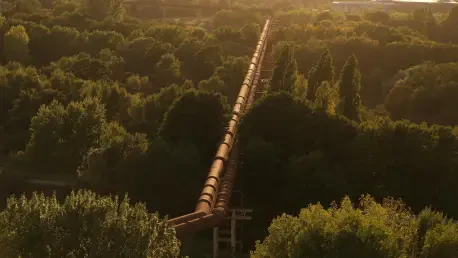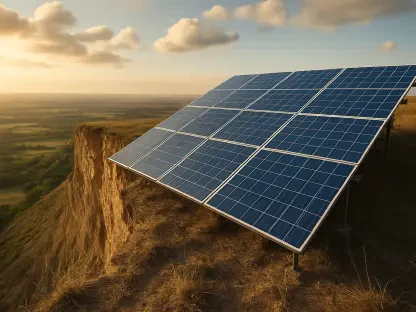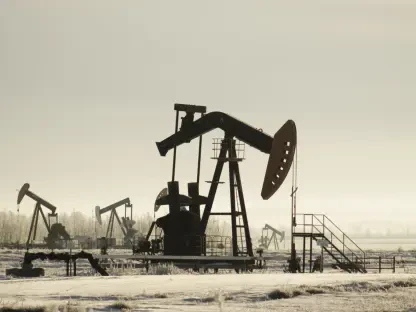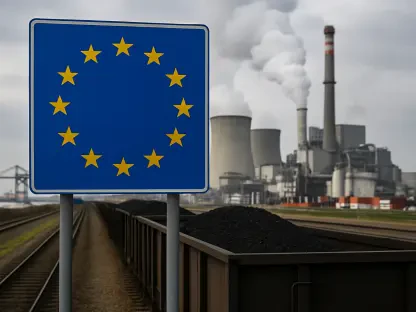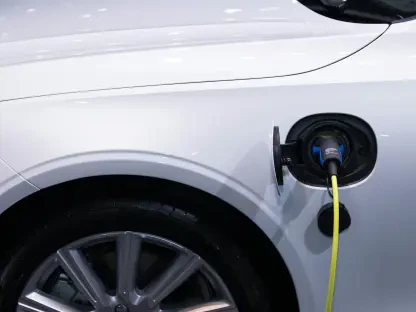The United States stands at a pivotal moment in safeguarding the stability of its electric grid, particularly as electricity demand continues to climb and extreme weather events grow more common and severe. Historical catastrophes, such as Winter Storm Uri in Texas during 2021, which led to nearly 250 deaths due to widespread power outages triggered by natural gas supply shortages, serve as a grim reminder of the stakes involved. The National Association of Regulatory Utility Commissioners (NARUC), through its Gas-Electric Alignment for Reliability (GEAR) task force, has brought attention to the intricate link between the natural gas and electric sectors. Their comprehensive findings reveal a stark reality: without significant improvements in gas infrastructure and storage capacity, the grid remains dangerously exposed to failures. This challenge transcends mere technical fixes; it touches on public safety, economic resilience, and the ability to keep homes and businesses powered during critical times. Addressing this gap is not just an option but an urgent necessity for the nation’s energy future.
Grid Fragility Under Extreme Conditions
The electric grid’s vulnerability during extreme weather events poses a significant threat to reliability, especially when demand for power surges unexpectedly. Disasters like Winter Storm Elliott in 2022 demonstrated the devastating impact of gas fuel shortages, which accounted for 20% of unplanned generator outages across affected regions. With natural gas increasingly serving as a cornerstone of electricity generation, any interruption in supply can quickly escalate into widespread blackouts, leaving communities stranded without heat or light. The GEAR task force has emphasized that the existing infrastructure lacks the capacity to meet these peak demands, particularly under harsh conditions. Expanding gas pipelines and bolstering storage facilities are critical steps to ensure a consistent fuel supply, preventing the kind of cascading failures that have marked past crises. Without such enhancements, the risk of prolonged outages during future storms remains unacceptably high, threatening both lives and livelihoods.
Another dimension of this issue lies in the growing dependence on gas-fired power plants to meet rising electricity needs across the country. As renewable energy sources are integrated into the grid, natural gas often acts as a reliable backup to balance intermittent supply from wind or solar. However, this reliance amplifies the consequences of inadequate gas infrastructure, especially during weather-driven demand spikes. Historical data from past storms shows that the lack of readily available fuel can cripple power generation at the worst possible moments. The GEAR report underscores that strategic investments in storage can act as a buffer, allowing utilities to stockpile gas for emergencies. This approach not only mitigates the immediate risks of supply disruptions but also builds a more resilient energy system capable of withstanding the unpredictable challenges posed by climate shifts. Addressing these weaknesses is essential to maintaining grid stability in an era of increasing uncertainty.
Strengthening Coordination Across Energy Sectors
A fundamental barrier to grid reliability is the lack of seamless coordination between the natural gas and electric industries, which often operate on divergent timelines and priorities. The GEAR task force advocates for enhanced alignment through better communication channels and synchronized operational planning to avert breakdowns during high-stress periods. Market mechanisms that incentivize reliability under stress are also proposed as a way to bridge existing gaps. Despite varying long-term energy visions—some areas prioritize a shift to renewables while others remain heavily reliant on gas—there is a shared recognition among stakeholders of the urgent need for immediate collaboration. Initiatives like a natural gas “readiness forum” are suggested to encourage ongoing dialogue, helping to prevent the kind of systemic failures witnessed in previous weather-related disasters. This cooperative framework is seen as a vital step toward a more dependable energy landscape.
Beyond dialogue, the practical integration of gas and electric systems requires addressing operational mismatches that can exacerbate crises. For instance, the scheduling differences between gas delivery and electricity demand often leave power plants without fuel when it’s most needed. The GEAR report highlights the importance of developing tools to align these cycles more effectively, ensuring that gas supply keeps pace with real-time electricity requirements. Additionally, fostering trust and transparency between the two sectors can help anticipate and resolve potential bottlenecks before they spiral into emergencies. While regional energy policies may differ, the consensus on short-term harmonization reflects a pragmatic understanding that reliability cannot wait for long-term debates to resolve. Building these bridges between industries is not merely a technical fix but a foundational shift to protect the grid from foreseeable risks and ensure consistent power delivery to all.
Tackling Economic Obstacles to Energy Reliability
Economic challenges represent a significant hurdle to achieving a reliable grid, often overshadowing even the physical limitations of infrastructure. The Reliability Alliance, a coalition of key industry groups, argues that misaligned funding and incentives between the gas and electric sectors frequently stall essential investments in capacity and preparedness. Competitive power suppliers have already committed substantial resources to winter readiness, yet broader systemic alignment remains elusive, as noted by industry leaders like EPSA President Todd Snitchler. The GEAR task force aligns with this perspective by pushing for market reforms, including demand response programs that encourage efficient gas usage and incentives for releasing unused pipeline capacity during peak times. These financial strategies are designed to unlock the resources needed to fortify the grid, addressing economic barriers that have long hindered progress in energy reliability.
Moreover, the economic dimension extends to the cost of inaction, which can far outweigh the price of proactive investment. Past outages have resulted in billions of dollars in damages, not to mention the human toll of disrupted lives and services. The GEAR recommendations aim to shift the focus toward cost-effective solutions, such as strategic storage investments that empower end-users to manage supply needs during shortages. By creating market tools that reward reliability and flexibility, regulators and utilities can attract the private capital necessary to expand infrastructure without placing an undue burden on consumers. This approach recognizes that economic incentives must align with operational goals to create a sustainable path forward. Tackling these financial challenges is crucial to ensuring that the grid can withstand future stresses, balancing affordability with the imperative of uninterrupted power supply across diverse regions.
Building a Resilient Future Through Practical Steps
The GEAR task force provides a clear roadmap with nine targeted recommendations to address the intertwined challenges of infrastructure and market dynamics. Key among these is the call for expanded gas pipeline networks and increased storage capacity to safeguard against supply shortages during critical periods. Empowering end-users with tools to manage demand more effectively also features prominently, offering a way to balance loads during peak usage. Rather than advocating for sweeping overhauls, such as establishing a new Gas Reliability Organization, the task force prioritizes actionable, incremental measures that can be tailored to the unique needs of different regions. This pragmatic stance acknowledges the diversity of energy policies nationwide while focusing on the pressing need to enhance grid resilience through tangible improvements that can be implemented swiftly and effectively.
Looking ahead, the emphasis on practical solutions offers a foundation for sustained progress in energy reliability. Market-based reforms, such as incentivizing pipeline capacity releases, complement physical infrastructure upgrades by optimizing existing resources. The rejection of more complex proposals reflects a deliberate choice to focus on what can be achieved now, ensuring that state regulators and industry players have clear, feasible steps to follow. Reflecting on past efforts, the response to earlier crises showed that targeted investments and coordination could mitigate some risks, yet gaps remained exposed during subsequent events. Moving forward, adopting these GEAR recommendations could pave the way for a more robust system, capable of meeting rising demand and weathering extreme conditions. Prioritizing these actionable strategies ensures that lessons from history translate into a stronger, more dependable grid for the future.
